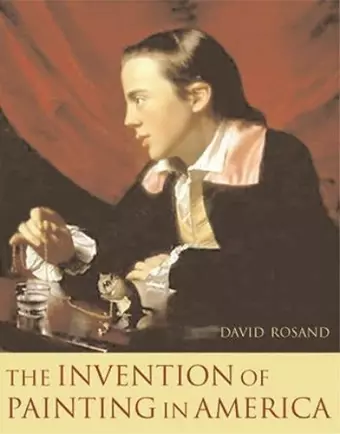The Invention of Painting in America
Format:Paperback
Publisher:Columbia University Press
Published:11th May '07
Currently unavailable, and unfortunately no date known when it will be back

David Rosand recounts the transformation of early American painters from provincial followers of the established traditions of Europe into some of the most innovative and influential artists in the world. Moving beyond simple descriptions of what distinguishes American art from other movements and forms, Rosand explores not only the status of artists and their relationship to their work but also the larger dialogue between the artist and society. He looks to the intensely studied portraits of America's early painters, especially Copley and Eakins, and the landscapes of Homer and Inness, among others. Each of these artists grappled with conflicting cultural attitudes and different expressive styles. He discusses the work of Davis, Gorky, de Kooning, Pollock, Rothko, and Motherwell and the subjects and themes that engaged them. Despite the indifference with which it was first met, American art flourished against the odds and founded the aesthetic consciousness that we equate with American art today. In this exhilarating study Rosand unearths the historical and artistic conditions that gave rise to the phenomenon of Abstract Expressionism.
Moving beyond descriptions of what distinguishes American art from other movements and forms, this work explores not only the status of artists and their relationship to their work but also the larger dialogue between the artist and society. It looks to the intensely studied portraits of America's early painters, especially Copley and Eakins.Struggling to create an identity distinct from the European tradition but lacking an established system of support, early painting in America received little cultural acceptance in its own country or abroad. Yet despite the initial indifference with which it was first met, American art flourished against the odds and founded the aesthetic consciousness that we equate with American art today. In this exhilarating study David Rosand shows how early American painters transformed themselves from provincial followers of the established traditions of Europe into some of the most innovative and influential artists in the world. Moving beyond simple descriptions of what distinguishes American art from other movements and forms, The Invention of Painting in America explores not only the status of artists and their personal relationship to their work but also the larger dialogue between the artist and society. Rosand looks to the intensely studied portraits of America's early painters-especially Copley and Eakins and the landscapes of Homer and Inness, among others-each of whom grappled with conflicting cultural attitudes and different expressive styles in order to reinvent the art of painting. He discusses the work of Davis, Gorky, de Kooning, Pollock, Rothko, and Motherwell and the subjects and themes that engaged them. While our current understanding of America's place in art is largely based on the astonishing success of a handful of mid-twentieth-century painters, Rosand unearths the historical and artistic conditions that both shaped and inspired the phenomenon of Abstract Expressionism.
Within the modest confines of this trim and attractive volume...Columbia art historian Rosand...tells the big story of how American painting grew and struggled from colonial obscurity to its stunning mid-20th-century coming-of-age. Publishers Weekly Readers will be reinspired, and their souls and minds reinvented...Highly recommended. Choice Indispensable...Rosand provides a unifying, and uniquely satisfying, view of painting in America. -- Margaret Moorman Columbia Magazine An academic treatise that will stimulate artists and fellow scholars. -- Stephen May American Arts Quarterly
ISBN: 9780231132978
Dimensions: unknown
Weight: unknown
246 pages